As the 2019 Pan-American Games wrap up in Lima, Peru, we remember that 60 years ago, from August 27 to September 7, 1959, Chicago hosted the 3rd Pan-American Games. According to the Official Souvenir Program, the athletic competition for the Western Hemisphere traces its roots to 1922, when in celebration of 100 years of Brazilian independence, a regional South American competition was held in Rio de Janeiro. Soon after, at the Paris Olympics in 1924, Central American leaders met to organize the Central American Games, held in Mexico City in 1926. In 1932, Los Angeles hosted the Olympics, and while there, leaders met and began to organize and define a structure for what a Pan-American Games, including South, Central and North America, would look like. Economic hardship and World War II delayed progress, but in 1951, the first Pan-American Games were held in Buenos Aires, Argentina, followed by Mexico City in 1955. Cleveland was originally supposed to host the 1959 Games, but it backed out in 1957. After Mayor Richard J. Daley’s pitch, Chicago was named host.
Similar to the international Olympics, the 1959 Pan-American Games included a torch relay leading up to the event. Boy Scouts carried the Pan-Am torch from Mexico City, the previous host city, across the United States border at Laredo, Texas, and all the way to Chicago.
Athletes were housed at the University of Chicago campus, and sites around the city hosted various events. Baseball was played at both the Sox' and Cubs' parks, basketball was played at DePaul University and rowing took place in the Cal-Sag Channel. The Chicago Park District built new swimming pools to Olympic standards at Portage Park, and swimming, diving and water polo events were held there. The Park District’s new cycling velodrome at Gately Stadium in the Pullman neighborhood hosted races, and Soldier Field hosted not only track and field events on its new track, but also the opening and closing ceremonies.
As was traditional for the Pan-American Games, two other events were held at the same time: the Festival of the Americas to celebrate Pan-American culture and the Sports Medicine Congress to improve the field of athletic medicine. The Festival of the Americas featured musical concerts, theater performances, and art exhibitions at theaters, museums and galleries around Chicagoland for two months leading up to the Games. It even included a Pan-American Book Fair sponsored by Chicago Public Library, with CPL branches highlighting books with Pan-American themes.
The Games held a special hiring campaign to make sure Spanish- and Portuguese-speaking people were available for interpretation services. Illinois Bell Telephone boasted a special program where a caller could ask for an “amigo operator,” and they would be connected to one of 12 Spanish-speaking operators to assist them with their phone calls.
American athletes, especially, seem to remember the 1959 Games fondly, despite undeniable hiccups. Those hiccups could be explained by the short time frame Chicago had to prepare, and possibly by a lower interest level in the Pan-Am Games versus the Olympics. While most of the facilities built for the Games no longer exist, the pools at Portage Park are still enjoyed today and were used in the 1972 U.S. Olympic swimming trials.
To learn more about the 1959 Pan-American Games, visit Special Collections to see our Chicago Park District Records: Photographs and Department of Urban Renewal Records.





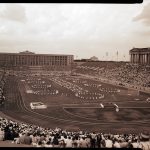
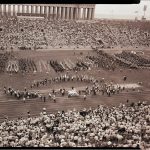

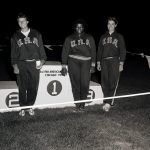
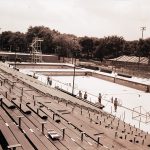
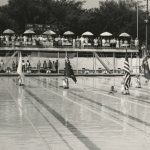

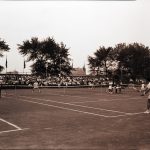

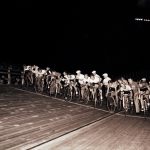


Add a comment to: 60th Anniversary of the Pan-American Games in Chicago